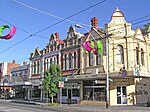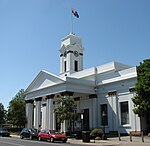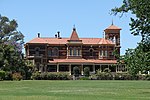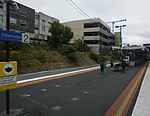Shelford Girls' Grammar
Shelford Girls' Grammar is an independent Anglican day school for girls living in Caulfield, a suburb of Melbourne, Victoria, Australia. The school was established in 1898, and is a member of Girls Sport Victoria (GSV), the Junior School Heads Association of Australia (JSHAA) and the Alliance of Girls' Schools Australasia. It is a non-selective entry school, with more than 600 students.Shelford has a coeducational Early Learning Centre, which educates toddlers 18 months old, as well as providing groups for 3 and 4-year-olds.Shelford is a member of Girls Sport Victoria (GSV).Shelford offers students the Victorian Certificate of Education (VCE) program, as well as the Vocational Education and Training (VET) course.Shelford uses a house system through which students participate in inter-house competitions, with 4 school houses.
Excerpt from the Wikipedia article Shelford Girls' Grammar (License: CC BY-SA 3.0, Authors).Shelford Girls' Grammar
Hood Crescent, Melbourne Caulfield North
Geographical coordinates (GPS) Address External links Nearby Places Show on map
Geographical coordinates (GPS)
| Latitude | Longitude |
|---|---|
| N -37.8775 ° | E 145.01138888889 ° |
Address
Shelford Girls' Grammar
Hood Crescent 3
3161 Melbourne, Caulfield North
Victoria, Australia
Open on Google Maps







